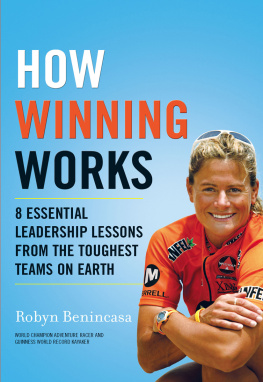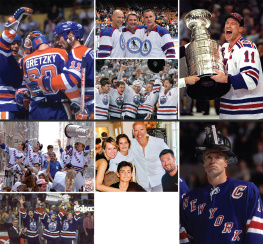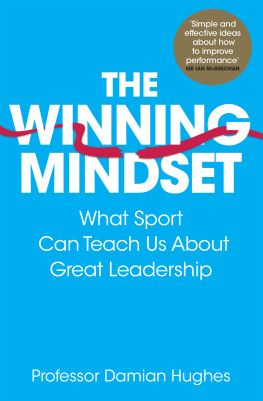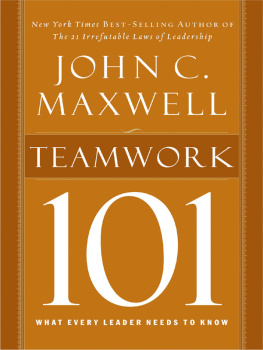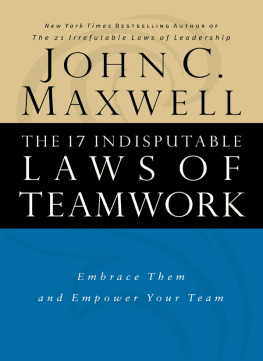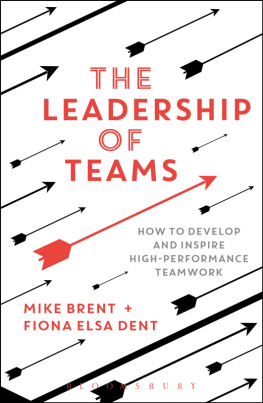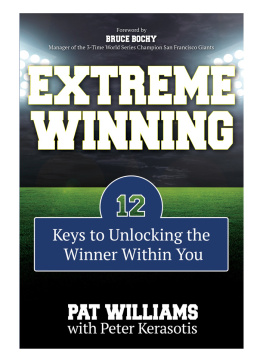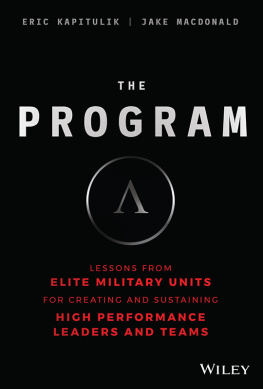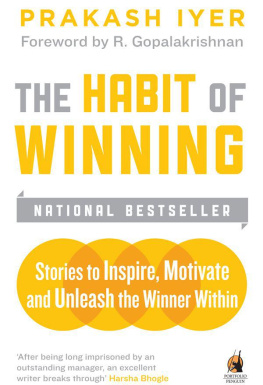INTRODUCTION
RAID GAULOISES ECUADOR SEPTEMBER 1998 COTOPAXI VOLCANO 15,000 FEET
It was almost one oclock in the morning. For four hours we had huddled together inside a hut perched 15,000 feet up the side of the Cotopaxi volcano, resting and preparing to make the final five-thousand-foot push to the summit. My teammatesRobert Nagle, John Howard, Ian Adamson and Steve Gurneywere snoring peacefully beside me, but I had not been able to stop crying since we entered the hut. I cried because it was the only way I could get oxygen, and I cried because I thought I was going to die if I had to climb higher.
We, Team Salomon-Presidio, had been running for three days at 14,000 feet on only two hours of sleep, and we were in the lead when we stumbled into this particular transition area, followed closely by the French team. On our arrival, the doctors and race organizers took one look at us and ordered both teams into a hut to lie down for a few hours, with neither team allowed to begin the summit push until 1:00 a.m. The altitude had clearly taken its toll on everyone. We were in bad shape, and I was one of the worst. All I could do was take tiny sips of air. I was turning blue from lack of oxygen, and now we were about to attempt to summit this 19,700-foot soaring volcano, which is normally a weeklong mountaineering trip. It was the most extreme and audacious challenge in the history of adventure racing, a goal beyond reason or mercy, right in the middle of a nine-day nonstop expedition race that began at 14,000 feet with a seventy-five-mile run in subfreezing temperatures.
For safetys sake, the organizers decided to test everyones oxygen saturation level before letting us climb higher. If a racers oxygen level was less than seventy percent, they would not be allowed to continue, and the team would be charged a five-hour penalty. For the teams that could continue, there would be another checkpoint at 18,000 feet, and if any team member couldnt continue past that point, theyd be assessed a two-hour penalty and would have to go back down the hill with their tails between their legs. At the end of the day, however, at least three people would have to make it to the summit, or the entire team would be disqualified from the race.
So an oxygen saturation level of seventy percent was the magic number, the number that was going to mean the difference between winning and losing, and perhaps even between living and dying. Im an emergency medical technician in my real-world job as a firefighter, so I understood the dangers of low oxygen saturation. Its a big red flag if youre at ninety-five percent or below. If your oxygen level is at eighty, youre nearly at deaths door. Anything below ninety percent means were rushing you to the hospital as a Code 3 with lights and sirens. So seventy percent seemed like a swell idea. Id never seen anyone that low on our monitor who could still stand (and cry), so I reasoned that that couldnt be me.
Suddenly the doctor and race organizers appeared in the huts doorway with the oxygen monitor, and everyone lined up to get their reading. One by one, each racer stuck an index finger into a clamp on the device, and a few seconds later, the doctor announced each result: Ninety. Eighty-eight. Eighty-seven. Ninety-two. Everyone was being cleared to continue, but I was the last one in line because I was afraid.
If youre under seventy percent, we cant let you continue, the doctor said as he motioned to me to step forward.
I nodded. My hands were shaking as I pulled off my glove and exposed a finger so he could attach the clamp that would read my oxygen level.
John, Robert, Ian and Steve hovered, awaiting the results. I continued to shake.
Seventy-one percent, the doctor said, shaking his head. He was at a loss for words. The glow of the number on the monitor spoke volumes: leave this hut, and you may not make it back. I had never been so afraid in my life. These elevations were too much to handle for a girl from sea level. I knew that racing with the best team in the world in a high-altitude race was a ridiculous plan, but I had hoped against hope that I would be good enough. Now those hopes were dashed by my failing lungs and my failing body. But a tiny speck of hope still lingered. Against all odds, I was still standing with seventy-one-percent oxygen saturation. How long can the human body endure this state? I wasnt too sure I wanted to find out.
I looked at my teammates, hoping one of them would pipe up and say, Hey, its not worth the risk. You stay here in this nice warm hut, and well take the five-hour penalty. But none of them said that. They just stood there in silence, waiting for me to decide. These guys were my heroes. They were legends in the sport, and I had been following their racing careers since starting my own in 1994. When they selected me to be their mandatory female teammate for this race, I jumped so high off my couch that I hit my head on my living room ceiling. This was the big time. This was my chance to prove myself; to show my heroes that they made the right choice in picking me for their team. The last thing I wanted to do was let them down. I made my decision.
Guys, can you hook me up to the ropes and pull me up to eighteen? I asked. That way well only get a two-hour penalty.
So that was the plan we came up with. Im not saying that it was a smart plan, or even a good plan, but as John always said, At least its a plan. Steve, John, Ian and Robert were literally going to drag my half-dead body another three thousand feet up the side of Cotopaxi on a rope attached to my climbing harness, and then they would leave me and continue on to the top so we could stay in the race.
Before I knew it, I was rigged for glacier travel, and we were on our way, climbing into the snowy darkness. Because I was the weakest link, I was put in the middle of the pack so if I went down, my teammates in front and behind could dig in with their ice axes and hold position. I dont remember anything except being petrified. Everything is much more intense and scary when you cant breathe. Not being able to move under my own power and being forced to rely so completely on other people was terrifying. We spent the whole night navigating glaciers, blinded by driving wind and snow, ascending upward at a snails pace. As the sun rose and a new day dawned on Cotopaxi, I looked up and saw a group of people up ahead, waiting for us.
We had made it to 18,000 feet.
The five of us fell to our knees when we reached the checkpoint. I covered my face with my hands and cried. My body rocked with the wind gusts that swirled around me like tiny tornadoes. My only thought was about how in the world I would be able to get back down the mountain without my teammates, who were going to continue on to the summit without me. There I was, stuck halfway up the side of the mountain without an ounce of energy or water remaining, and I was about to be left alone. What was I going to do, slide down on my butt? Were they just going to push me and let me roll down?
And thats when Ian came up to me and said, You ready?
But how am I going to get down? I asked. I cried into my gloves.
Down? Oh, I guess nobody told you yet. Youre going up. Its just you, me and Steve now.
At that, I took my face out of my gloves, in which I had been hiding to try to escape the fear, the pain, the fact that I was clinging to life precariously on the side of an active volcano. I looked up to see that I was surrounded by television cameras. There was a large, black lens focusing on my face, filming my reaction to Ians news. I tried to ignore the cameraman and focus on Ian, on getting my oxygen-starved brain to make sense of what he was saying, on making my body move with something other than involuntary shudders. Then I felt a hand on my shoulder. It was Robert.

